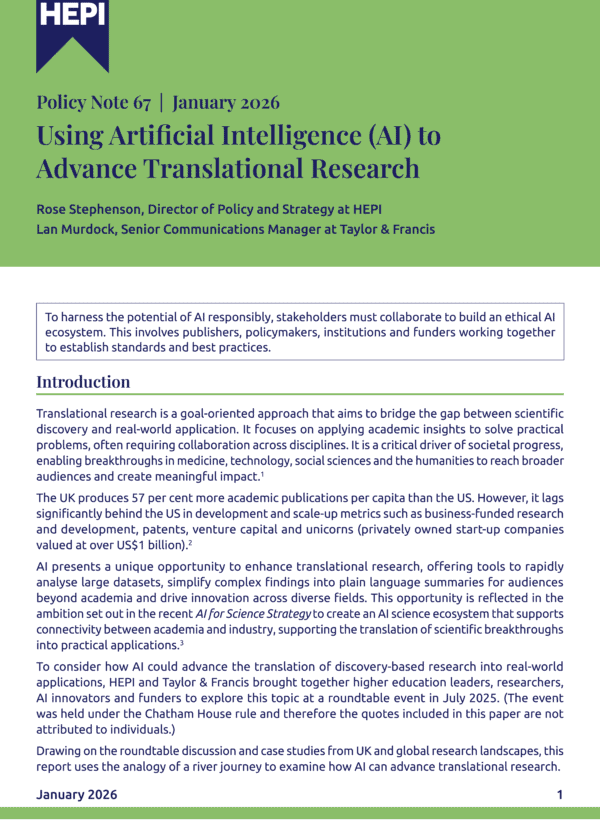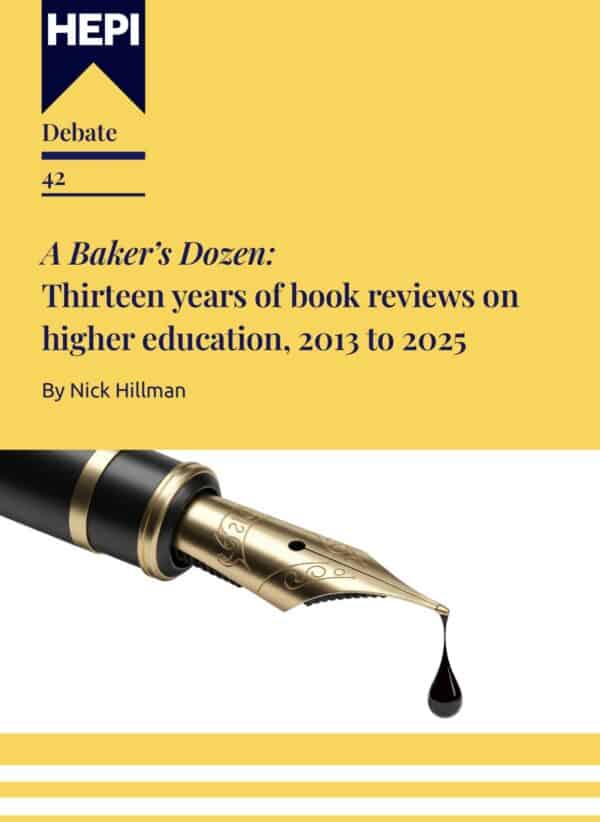Bridging the Gap: How Smart Technology Can Align University Programmes with Real-World Skills
This HEPI blog post was kindly authored by Pete Moss, Business Development Director at Ellucian.
‘Pouvez-vous s’il vous plaît me dire où se trouve la gare?’ – this is the extent that a colleague of mine can remember from his Introductory French module that he completed as part of a computing degree in the late 90s. That institution’s attempt at the time to embed flexibility and cross-curriculum choice to help students develop skills out of their discipline to help with employability. ‘It was easier to pass than the programming courses’ was the authentic feedback that my colleague gave in retrospect, but they did at least have the choice to expand their learning experience and gain some broader foundational skills. That institution, however, has long abandoned much of that flexibility, largely due to the apparent complexity of administration.
That is not to say that there are not fantastic examples of employability related skills initiatives across the sector, but the recent policy landscape (not least the Skills England Sector evidence on the growth and skills offer) and ever-present national growth agenda are now firmly putting the spotlight on the role of HE in this area. The if element of HE holding that key role in the skills agenda is widely held, but now the thorny problem of how must be addressed. Technology advancements, specifically AI, will play a contributory factor in how institutions can remove barriers that caused institutions to reduce flexibility in the past, but what of the wider considerations?
To explore this topic further I asked Ben Rodgers, an experienced academic registrar and AHEP consultant, for his views on the topic:
In today’s fast-moving global economy, the value of a university education is increasingly measured not just by academic achievement, but by the employability of graduates. Employers are no longer looking solely for degrees, they’re looking for skills: digital fluency, critical thinking, communication, and technical know-how that align with the needs of their industries. Meanwhile, universities are under pressure to demonstrate that their programmes deliver real-world value. The challenge is clear: how do we bridge the gap between what is taught and what is needed?
This is where technology can make a transformative difference. At the forefront of this change is a new wave of AI-powered innovation designed to bridge the gap between academic programmes and real-world skill demands. These emerging technologies can analyse curricula, extracting the skills embedded within them and mapping those against labour market data to identify areas of alignment and gaps.
Crucially, they work in both directions; institutions can see what skills a course develops, while students or employers can start with a desired competency like coding or digital marketing and trace back to the programmes that build those capabilities.
It is the kind of innovation that higher education has long needed. For too long, the link between the classroom and the workplace has been inconsistent or poorly articulated. Universities may know they are delivering valuable learning, but haven’t always had the means to evidence that value in terms that resonate with employers and prospective students. These technologies bring much-needed clarity, offering structured and data-informed ways to demonstrate how academic learning contributes directly to employment readiness.
A Game-Changer for the Lifelong Learning Entitlement (LLE)
This kind of technology becomes even more important as the UK rolls out the Lifelong Learning Entitlement (LLE). The LLE is set to reshape the educational landscape by allowing individuals to access student finance for short courses, modular learning and skills-based development over the course of their lives. This shift away from traditional three-year degrees opens new possibilities, but also new challenges.
How will learners know which modules to pick? How will they know what skills they need for the job they want or even the job they haven’t yet imagined? With the support of emerging AI-driven tools, learners can begin to reverse-engineer their career goals. Want to become a Data Scientist? These systems can help identify which combinations of modules across a university lead to that destination. Interested in project management? The technology can pinpoint where those skills are taught, and which courses offer them. It’s like having a careers advisor, curriculum guide, and labour market analyst all in one—offering personalised insights that connect educational choices with professional ambitions.
This sort of capability is vital if LLE is to be more than just a funding mechanism. It needs to be supported by intelligent infrastructure that empowers learners to make informed choices. Otherwise, there’s a risk that modular study becomes a confusing patchwork of disconnected learning.
Towards a Shared, Inter-University Skills Ecosystem
Now imagine if we took this even further. What if a skills platform were adopted not just by individual institutions but as a shared framework across regions or even nationally? In this model, students in Glasgow, Cardiff, Birmingham, or Belfast could see the skills they need for local job markets and be directed to the institutions offering them. This would create a more agile, responsive, and learner-centred education system. Universities wouldn’t just be competing with each other; they’d be collaborating to build a broader skills ecosystem.
The scale of opportunity here is significant and growing fast. Consider this: if every individual in the workforce has access to around £1,800 in personal development funding each year, the cumulative potential across a university’s learner base is vast. Multiply that by hundreds or thousands of learners, and you’re looking at a transformative funding stream that’s currently underutilised.
This is not just an opportunity for students, it’s a strategic imperative for institutions. By enabling individuals to build relevant, targeted skills, universities position themselves as essential engines of workforce development, driving economic resilience at local, regional, and national levels. It’s a win-win: empowered learners, future-ready graduates, and sustainable new revenue for the sector.
Of course, this requires a shift in thinking from institutional autonomy to inter-institutional alignment. But the benefits are compelling: more efficient use of public funding, stronger regional economies, and better outcomes for students.
Making Programme Design More Purposeful
Beyond helping students choose what to study, this technology also has the power to influence what universities choose to offer. If data consistently shows that a particular programme has little connection to current or emerging job markets, it is worth investigating. It does not mean the course should be cut. There may be academic or social reasons to preserve it, but it does mean the institution is equipped with the intelligence needed to make informed decisions.
It also invites a more purposeful approach to curriculum design. Are we including this module because it is pedagogically valuable, or because it’s always been there? Are we assessing this way because it builds a skill, or because it is the easiest to administer? When you can map outcomes to employment skills, these questions become easier to answer.
Moreover, it provides a compelling framework for conversations with students, parents, and policy-makers about the value of university education. It shows that we are listening to what the world needs and responding with academic rigour and strategic intent.
Global Potential, Local Application
The skills gap is not just a UK issue; it’s a global one. The World Economic Forum reports that nearly half of all workers (66 per cent) will need reskilling by 2030. Universities worldwide are grappling with how to stay relevant in an era of automation, AI and constant disruption. Emerging AI tools offer the potential for a globally shared skills taxonomy that could, with appropriate localisation, apply anywhere.
Conclusion
As universities continue to evolve, their role as engines of economic and social mobility becomes more important than ever. To fulfil that role, we must ensure that what we teach aligns with what the world needs. That does not mean turning every degree into job training, but it does mean being thoughtful, strategic, and transparent about the skills our programmes provide.
Emerging technologies offer an exciting glimpse into a more connected, skills-aware future. They empower students to take greater control of their learning, help universities refine and align their programmes and ensure that the promise of Higher Education translates into meaningful, real-world opportunities.
After all, education is a journey. It’s time the map caught up.







Comments
Albert Wright says:
This is a very refreshing contribution towards supplying HE with a new justification for continued expansion.
HE institutions should be the leaders for the future understanding of how AI should be used to benefit people of all ages.
These proposals offer a road map. A move to more transparency, more cooperation and more consistency.
They represent a way to ensure the qualifications on offer will deliver specific competencies in skills that are designed to meet the requirements of employers and society
Reply
Add comment